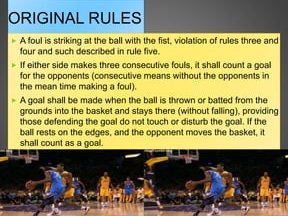Basketball is a fast-paced and exciting sport played by millions around the world. Known for its high energy, skillful play, and strategic depth, basketball offers both entertainment and athletic challenge. Understanding the basic rules and gameplay can enhance your appreciation of the game, whether you’re a player, a fan, or just starting to learn about the sport. This article provides a comprehensive overview of basketball’s fundamental rules and how the game is played.
What is Basketball?
Basketball is a team sport played between two teams of five players each on a rectangular court. The objective of the game is to score more points than the opposing team by shooting the ball through the opponent’s hoop, which is mounted 10 feet (3.05 meters) above the floor. The game is played in four quarters, with each quarter lasting 12 minutes in professional leagues, such as the NBA.
Basic Objective:
- Score Points: Teams score points by making shots through the opponent’s hoop. A field goal scores two points, or three points if taken from beyond the three-point line. Free throws are worth one point each.
The Court and Equipment
Understanding the court and equipment is essential for grasping the gameplay:
- The Court: A standard basketball court is 94 feet (28.65 meters) long and 50 feet (15.24 meters) wide. It is divided into two halves by the midcourt line.
- The Hoop: The hoop is mounted 10 feet (3.05 meters) above the floor at each end of the court.
- The Ball: A round, orange ball with a circumference of about 29.5 inches (75 cm) used for playing.
Basic Rules of Basketball
Basketball has a set of rules that ensure fair play and structured gameplay. Here are some of the fundamental rules:
- Game Duration: A standard game consists of four quarters, each lasting 12 minutes. There is a 15-minute halftime break, and any overtime periods are played if the score is tied at the end of regulation.
- Scoring: Points are scored by shooting the ball through the opponent’s hoop.
- Field Goals: Two points for a shot made from inside the three-point line, three points for a shot made from beyond the three-point line.
- Free Throws: One point per free throw, awarded after certain fouls.
- Dribbling and Passing: Players must dribble the ball (continuously bounce it) while moving. They can pass the ball to teammates or shoot it towards the basket. Players cannot run with the ball without dribbling, which is known as “traveling.”
- Fouls and Free Throws: Personal fouls are committed through illegal physical contact. Players who are fouled during a shooting attempt are awarded free throws. Team fouls accumulate, and after a certain number of team fouls, opponents are awarded free throws for non-shooting fouls.
- Violations:
- Traveling: Moving with the ball without dribbling.
- Double Dribble: Dribbling the ball, stopping, and then dribbling again.
- Shot Clock Violation: Failing to attempt a shot within the shot clock time limit (usually 24 seconds).
- Backcourt Violation: The ball cannot be dribbled back into the defensive half after crossing the midcourt line.
Player Positions and Roles
Players have specific positions and roles on the court:
- Point Guard: Often the team’s primary ball handler and playmaker. They are responsible for setting up plays and directing the team’s offense.
- Shooting Guard: Focuses on scoring and shooting from long range. They are also crucial for perimeter defense.
- Small Forward: Versatile players who can score, rebound, and defend. They are typically agile and capable of playing both inside and outside.
- Power Forward: Strong and physical players who are effective in rebounding and scoring close to the basket.
- Center: Usually the tallest player, positioned near the basket for scoring, rebounding, and shot-blocking.
Key Strategies and Gameplay Tactics
Basketball strategy involves various tactics and plays designed to outscore the opponent:
- Offense: Teams use different offensive strategies, including fast breaks (quick attacks), pick-and-roll plays (using screens to create shooting opportunities), and motion offenses (continuous movement to create open shots).
- Defense: Defensive strategies include man-to-man defense (each player guards a specific opponent) and zone defense (players cover specific areas of the court).
The Importance of Teamwork and Sportsmanship
Basketball is a team sport that relies on effective communication and cooperation. Key aspects include:
- Teamwork: Successful teams work together, share the ball, and support each other both offensively and defensively.
- Sportsmanship: Respect for referees, opponents, and the rules of the game is crucial. Good sportsmanship enhances the enjoyment of the game and maintains a positive playing environment.
In conclusion, basketball is a dynamic sport with straightforward rules and a rich tactical depth. Understanding the basic rules, court layout, player positions, and strategies can enhance your enjoyment of the game and provide a solid foundation for appreciating this popular sport. Whether you’re playing, coaching, or simply watching, knowing the fundamentals of basketball can make the experience more engaging and enjoyable.

